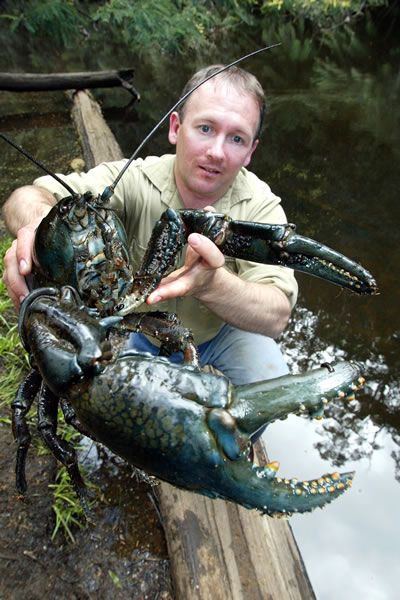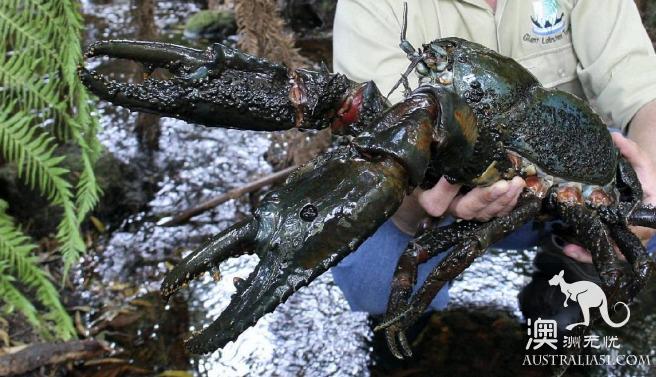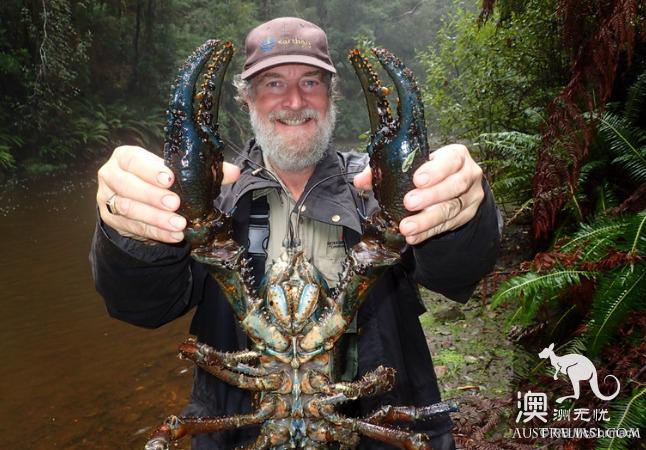Everyone has eaten crayfish, but have you ever eaten a super-invincible lobster the size of a dog?
This kind of lobster grows on all sides of the sea, the beautiful island of Tasmania, known as the freshwater lobster, is also "the largest lobster in the world!"
How big is it?

The lobster is the largest in size to match the size of a medium-sized dog!
The heaviest can be as long as 6 kilograms!
Make sure you eat one at a time, and you can't finish it!
And its life span is very long, the longest can live to 60 years old!
Its pliers are so powerful that they can break a man's arm!
It is not only the world's largest freshwater shrimp, but also the world's largest invertebrate! Also known as giant cobbler prawns!
The point is, it only grows in the northwest waters of Talla, it's unique here, it doesn't exist anywhere else in the world!
Most notably, it will have different colors in different waters, light yellow, dark brown, light black, bright blue, dark blue, and so on.
This lobster is also a very old animal, so it is also called walking fossil.

Because of its low fat content, rich in amino acids, the meat is delicate and fresh, so it has always been a local dining table delicacy.

Local resident Todd Walsh learned how to catch the lobster when he was young. The history of shrimp fishing began several generations before their family. He is also called "Lobster Man" by the locals.

But now, Walsh no longer catches shrimp for the sake of eating, but for the record, because the lobster has become an endangered animal and is being eaten away.
Professor Alastair Richardson, a local zoologist, said that when he first arrived in Tahlia 40 years ago, a fishing permit could catch 12 of these big lobsters a day. But now, fully grown-up lobsters can't be found because they have almost been arrested in the past century.

Although the state imposed a ban on fishing for the crayfish in 1998, the damage caused by overfishing is irreparable-because the freshwater lobster has a long life span and is slow to grow, so it has to restore its quantity. It will take decades.

And even if there is a ban, there is still a risk of sneaking lobster fishing, which is the biggest threat to adult lobsters.
And for young lobsters, the biggest threat is land exploitation like logging.
Because young lobsters must find a shelter in the middle of a river's small stones, logging causes sediment to drift into the river and is easily captured by predators if its hiding place is full of sediment.
Zoologists say that if protection is not taken, the lobster population will slowly and steadily decline until it disappears.
To that end, in August, goverment, Tata, and the federal goverment signed a plan to restore freshwater lobsters, suggesting an increase in the area of lobster habitat conservation in some rivers. Goverment also said it was drafting legislation to increase penalties for lobster theft.
But experts say such measures are not enough and must be earmarked for the lobster to live in. Otherwise their numbers will continue to decline, sooner or later they will become extinct.
I can't believe that even where the national treasure kangaroo needs an foodie from China, there are animals that will be eaten to extinction, not knowing whether this is a good thing or a bad thing.